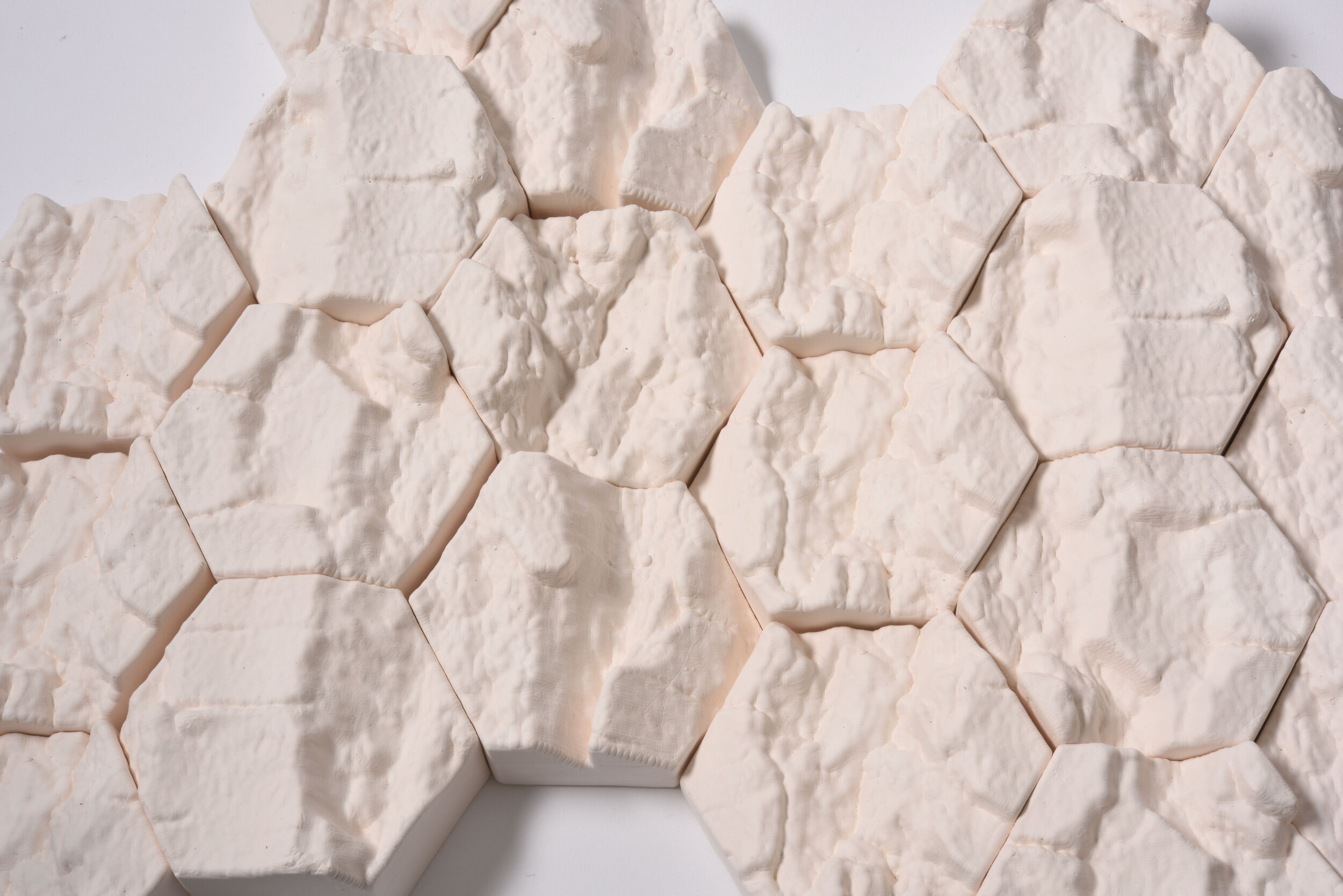
Baum Rinde
Taking a piece of tree bark as a starting point, this project is a hands-on exploration of traditional ceramic and glass techniques in combination with new technological tools that have allowed us to print the fascinating shapes of this seemingly humble piece of bark on ceramic and glass tiles.
With the help of a 3D scanner we have captured the texture of this tree bark. We then placed the 3D file in the shape of a pentagon and used a CNC milling machine to carve the structure into a block of plaster creating a traditional mold for porcelain casting.
TREE BARK 3DSCANED > CNC ROUTER CARVING ON PLASTER BLOCK > ROUGH CUT > FINAL CUT > PORCELAIN CASTING > GLASS SAND CASTING
>
TREE BARK 3DSCANED > CNC ROUTER CARVING ON PLASTER BLOCK > ROUGH CUT > FINAL CUT > PORCELAIN CASTING > GLASS SAND CASTING >
We cut different molds taking different areas of the crust structure and we also experimented with the so-called rough cut, which is the first carving performed by the CNC milling machine before making the final roundings to obtain the exact features of the file. In this first cut, the computer breaks down the complex texture of the tree bark into serial planes that have a topographical relief aesthetic. Finally, we used the positive pieces to make a sand-casting mold for the creation of glass tiles.
The result has brought us closer to the details of these structures giving us a new look at the fascinating forms of nature and has allowed us to take advantage of their aesthetic beauty for the design of these tiles.
Weißensee Kunsthochschule Berlin 2017, 4th-Semester Product Design. Partners: Rahel Jacobs & Niels Junke






